Wataribune is one of the most important sake rice types in Japan. It’s one of the parents of the king of sake rice: Yamada Nishiki. But because it’s so hard to grow, it nearly went extinct.
This article will explore this mysterious sake rice grain, how it tastes, and some popular sake made with it.
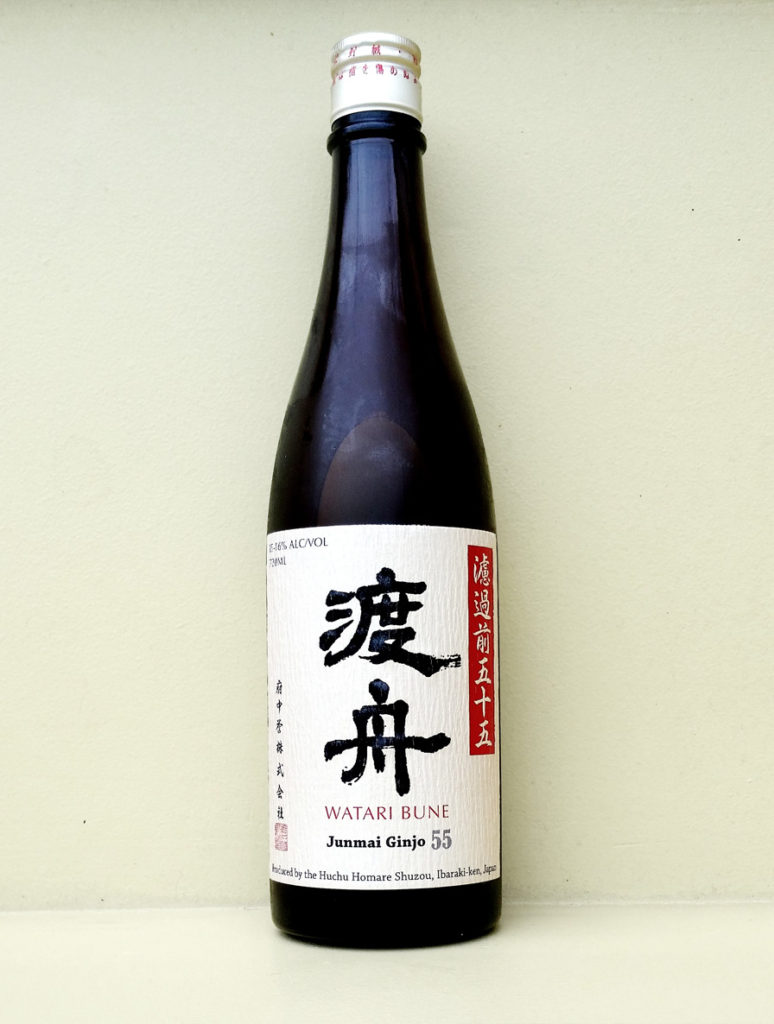
The Story of Wataribune Sake Rice
Wataribune (渡舟) is an heirloom sake rice strain that was once very popular. But it practically disappeared for half a century. It was revived only recently.
It is believed to be a selection of Omachi rice that grew well in the Kanto region.
Distinguished Offspring
Yamada Nishiki is the leading sake rice strain and produces flavorful sake. It’s sought after by brewers as it makes quality koji and withstands high polishing rates.
In 1936, Yamada Nishiki was created in Hyogo prefecture by cross-breeding Tankan Wataribune and Yamadaho. Wataribune’s legacy and lineage exemplify why this rice strain is so special. But challenges in agricultural cultivation led to its disappearance.
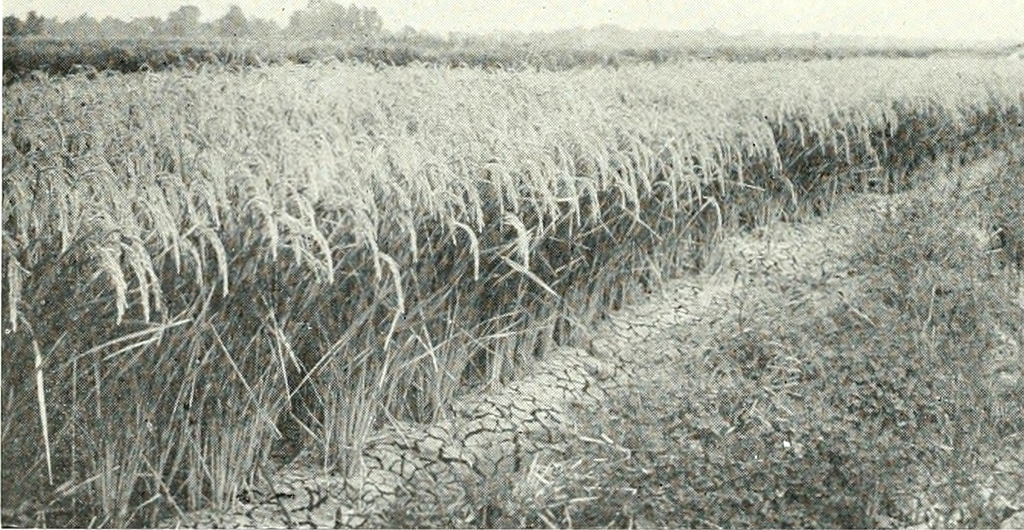
Wataribune Was Once Widely-Grown in America
S. Sabaira introduced Wataribune to Texas in 1908 as a table rice. Shortly after, the US Department of Agriculture officially introduced it. The late-maturing varietal didn’t catch on in the rice-growing states of Texas or Louisana. But it was the leading rice variety in California from its introduction in 1912 until 1918.
An early-maturing selection of Wataribune was introduced to California in 1913. It matures about ten days earlier than regular Wataribune, which it largely replaced.
Decades later, pure-line selections of early-ripening Wataribune were eventually named Caloro. And Caloro was used to create one of America’s most important rice cultivars: Calrose. It was released in 1948 to California rice farmers, the result of crossing Caloro with a medium-grain rice strain called Calady.
Huchu Homare Revives the Grain
Wataribune was revived in the late 80s and early 90s by Huchu Homare president Takaaki Yamauchi of Ibaraki. He got just 14 grams of seeds from the Ministry of Agriculture’s National Research Institute. The first harvest yielded 15 kilograms of rice. Today, Huchu Homare makes about 18,000 liters of Wataribune sake per year.
Huchu Homare uses Wataribune for its famous Junmai Ginjo 55 and Junmai Daiginjo sake.
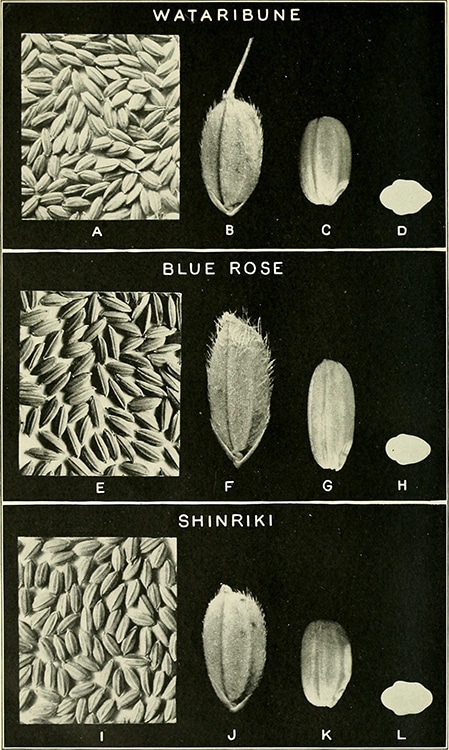
Characteristics of Wataribune Rice
Wataribune has large grains with a high rate of shinpaku. It mills well too and has been polished up to 35% seimaibuai. Wataribune rice crops are also consistently high quality.
The rice strain fell out of favor because of the challenges it presents to farmers. Its stalk grows very tall, and the growth rate is slow. Maturing in late October, it’s one of the latest-maturing rice varieties. This provides many opportunities for wind damage. Once felled by wind (lodged), the plant cannot be saved.
Like its sibling Omachi, Wataribune is also a favorite of hungry insects.
Types of Wataribune
Not all Wataribune is the same, as the rice grains display genetic diversity.
As mentioned earlier, Tankan Wataribune (短稈渡舟) was one of the parents in the cross that produced Yamada Nishiki. Tankan Wataribune is a “short stalk” strain selection of the original. The reduced height makes it less susceptible to wind damage.
Shiga Wataribune was born in 1895 and is a pure-line selection of Fukuoka Omachi rice. This was the strain (aka Shiga Wataribune No. 6) sent to America and crossbred to make Calrose rice. Despite its great legacy, Shiga Wataribune No.6 is rare and has not been used much in the past half-century. It has a taller stalk than Tankan Wataribune and is susceptible to wind damage, disease, and insects. This led to its decline and halting of cultivation after 1959.
The excitement of Wataribune’s parent lineage to Yamada Nishiki rice spurred a revival of this strain between 2003-2004. Sake made with Shiga Wataribune No.6 has shown itself to be on par with Yamada Nishiki, and sake brewers are using it more frequently.
What Does Wataribune Sake Taste Like?
Wataribune tends to produce aromatic, full-bodied, layered, and fresh sake. Citrus, flowers, and streamed rice are just a few common descriptors.
This rice type is only used to make a handful of sake brands. But due to the characteristics of the grains, it’s often used to make fruity ginjo-shu sake.
Famous Brands Using Wataribune
For many years, Huchu Homare was the only brewery focused on Wataribune sake. However, other breweries have slowly added the rice to their portfolios of sake.
Watari Bune – Huchu Homare
If there’s one brewery that comes to mind when discussing Wataribune, it’s Huchu Homare. This well-known Ibaraki brewery revived the previously extinct heirloom strain. They currently offer a junmai ginjo and a junmai daiginjo made with Ibaraki-grown Wataribune.
Shop Watari Bune Sake
We may earn commissions on qualifying purchases.
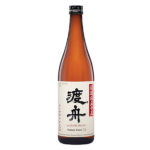
Watari Bune 55 Junmai Ginjo
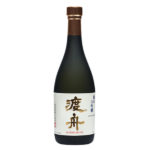
Watari Bune Junmai Daiginjo
Dokan – Ota Shuzo
Ota sake brewery in Shiga makes a junmai nama genshu sake using local Wataribune. The sake is branded as Dokan Wataribune Nama Genshu.
Furosen – Uehara Shuzo
Uehara shuzo in Shiga prefecture uses Wataribune for its Furosen Yamahai Junmai Ginjo Nama.
The craft kura aims to keep all the labor and ingredients local. They also mill rice in-house and aspire to use as much local Shiga Wataribune as possible. But occasionally, they source up to 20% of their rice from other prefectures.
Fujii Honke
Fujii Honke in Shiga is known for making robust sakes that are either aged or done in a kimoto style. For their more fruit-forward ginjo sake, they aptly choose to use Wataribune. The brewery uses both Shiga Wataribune No. 2 and No. 6.
Shichi Hon Yari – Tomita Shuzo
Tomita Shuzo of Shiga makes the venerable Shichi Hon Yari brand. They make a junmai daiginjo using Wataribune.
Tamanohikari
Tamanohikari is a Fushimi, Kyoto brewery focused on brewing junmai-style sake. They make a junmai daiginjo made with Tankan Wataribune.
Hitakami – Hirako Shuzo
Hirako Shuzo of Miyagi prefecture brews sake that is often paired with sushi and sashimi. They have a product that is a junmai sake made from Tankan Wataribune.
Nabeshima – Fukuchiyo Shuzo
Fukuchiyo Shuzo of the Saga prefecture brews a junmai saiginjo using Tankan Wataribune. The product exists under the brand name Nabeshima Junmai Daiginjo Tankan Wataribune.
Sources
Jones, Jenkin W. Improvement in Rice. Bureau of Plant Industry, 1936
Champagne, Elaine T. Rice: Chemistry and Technology. American Association of Cereal Chemists, 2006
Watari Bune. Kobrand Fine Wine and Spirits
Shiga Wataribune No. 6. National Agriculture and Food Research Organization
滋賀渡船6号. Ja.wikipedia

Jake Lee
I moved to Seattle in the summer of 2018. Since that time, I’ve had the privilege to work at some of the city’s finest Japanese restaurants and study Japanese cuisine, sake, and spirits! Alongside food, my passions include history and the arts. The experience of drinking sake is like drinking history and art at the same time. It is a pleasure to share my passion for Japanese cuisine with others!
Jake
I am very impressed with your research about Watari Bune. I am personal friends of Yamauchi-san from Huchu Homare. I have been promoting his sake for years in the US – I live in Oregon. thank you for your information.
Marcus Pakiser